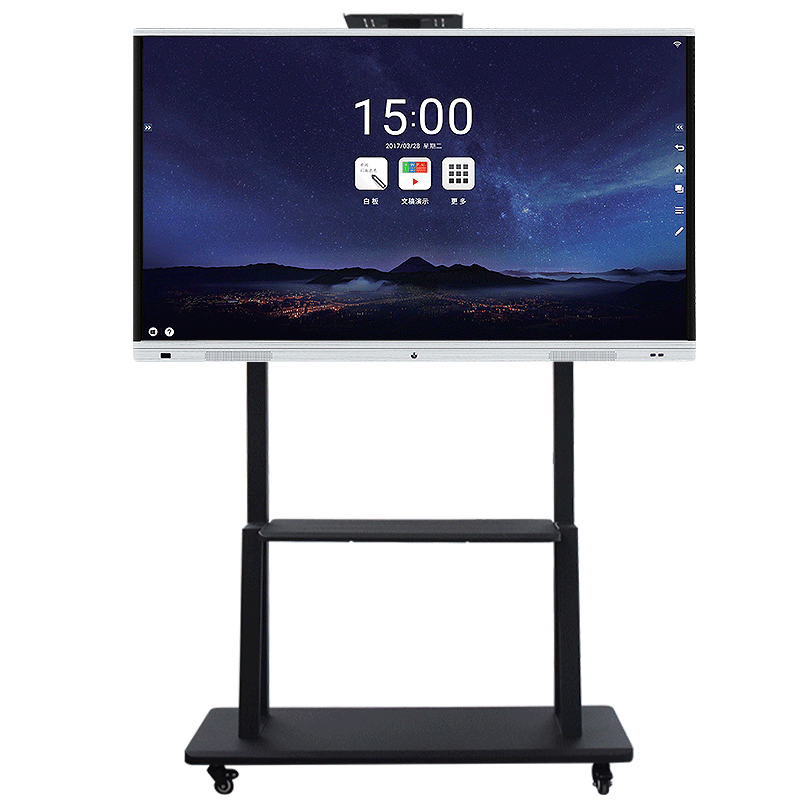How the hardware part works
Touch technology principle
- Capacitive touch technology is a common way to use interactive whiteboard for classrooms. There is a transparent layer of conductive material inside the whiteboard, which changes the capacitance at the touch point when a conductive object such as a finger touches the surface of the whiteboard. Whiteboard's touch detection system is able to sense this change in capacitance and calculate the position coordinates of the touch point through complex circuitry and algorithms. This technology supports multi-touch, which can accurately recognize the position and motion of multiple touch points, such as zooming, rotating, and other gestures at the same time.
- Electromagnetic touch technology relies on the principle of electromagnetic induction. There is a coil inside the electronic pen, and there is an electromagnetic induction layer inside the whiteboard. When the pen approaches or touches the whiteboard, the electromagnetic induction layer of the whiteboard detects the electromagnetic signal emitted by the pen and determines the position of the pen. This method of writing has high accuracy, can well simulate the real writing experience, and is suitable for precise drawing and other operations.
Signal Conversion & Transmission
- Signals, whether they are generated by touch or electromagnetic induction, need to be converted. Touch signals are converted into digital signals that include information such as the location of the touch point, the type of touch (tap, swipe, etc.). The digital signal is then transmitted to the computer or smart device connected to it via a communication interface such as USB, Bluetooth, or Wi-Fi. For smart board for teachings connected via a network connection, these signals can also be transmitted to a cloud server for remote collaboration.
The working mechanism of the software part
The driver interfaces with the system
- Digital whiteboards require drivers to be installed to communicate with the operating system. The driver acts as a translator who understands the signals coming from the whiteboard hardware and translates them into instructions that the operating system can recognize. For example, when the hardware signals the position of a touch point, the driver translates it into a mouse movement or click command in the operating system, allowing the operating system to handle the signal from a whiteboard in the same way that it handles a normal mouse operation.
Functional implementation in the application
- In an application, such as collaboration software or teaching software, whiteboard software implements various functions based on the signals it receives. For example, when receiving a "Brush Tool Selection" signal and a series of touch point position signals, the software will draw lines based on the touch point position in the whiteboard display area, simulating the writing effect of the brush. At the same time, the software can also realize layer management, such as placing text, graphics, etc. on different layers, which is convenient for users to edit and display. It can also group, move, zoom and other operations on the content on the whiteboard, which are completed by the software processing the signal.
- For collaboration functions, the whiteboard software uses a network communication protocol to send one user's actions in real time to other users who share the whiteboard. The software ensures that all users see the whiteboard content is updated synchronously through server or peer-to-peer (P2P) communication. For example, in an interactive whiteboard application for an online meeting, when a user adds a graphic to the whiteboard, the software will quickly send the information about the graphic to other users, and the other user's software will also add the graphic to their own whiteboard interface.


 Mr. zptouch01
Mr. zptouch01




